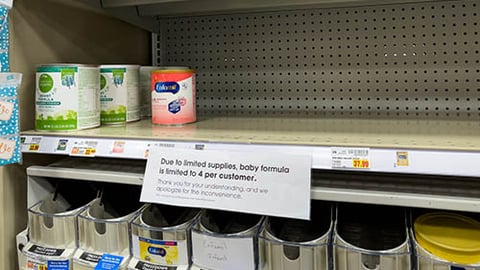USDA Releases Framework to Transform Food Supply Chain
In an aim to strengthen the food system across the supply chain, the U.S. Department of Agriculture (USDA) has unveiled an initiative and investment to create more markets that will benefit both producers and consumers with fairer prices and address longstanding issues highlighted by the COVID-19 pandemic as well as supply chain disruptions.
USDA will do this by building more resilient local and regional food production; fairer markets for all producers; ensuring access to safe, healthy and nutritious food in all communities; building new markets and streams of income for farmers and producers using climate-smart food and forestry practices; making investments in infrastructure and clean-energy capabilities in rural America; and committing to equity across the department.
Details on the goals of USDA’s Food System Transformation framework include:
- Building a more resilient food supply chain that provides more and better market options for consumers and producers while reducing carbon pollution. The pandemic and recent supply chain disruptions have revealed the perils of a national food system that depends on capacity concentrated in a few geographic areas and requires many steps to get from farm to fork. Having more capacity to gather, process, move and store food in different geographic areas of the country will provide more options for producers to create value-added products and sell locally, which will support new economic opportunities and job creation in rural communities. Additional regional capacity will also give consumers more options to buy locally produced products — helping ensure that food is available to consumers — and reduce the climate impact of the food supply chain.
- Creating a fairer food system that combats market dominance and helps producers and consumers gain more power in the marketplace by creating new, more and better local market options. According to USDA, just 14 cents of the food dollar go to producers on average – in large part because producers’ power in the marketplace has declined over the past 50 years as a result of increased consolidation in the food system. Today, just a handful of companies dominate meat and poultry processing, and just a few multinational companies produce most brands and products on supermarket shelves. USDA’s investments will deliver a better deal for farmers, ranchers, growers and consumers.
- Making nutritious food more accessible and affordable for consumers. The pandemic exposed and exacerbated the challenges of food and nutrition insecurity in the United States. Hard-pressed families — including those who depend on school meals or SNAP, and seniors on fixed incomes — may have limited food options, and some communities have been underserved by grocery stores and food retailers, making it difficult to access healthy food. USDA’s Food System Transformation framework includes programs to ensure that all consumers can access fresh, healthy, nutritious food.
- Emphasizing equity. USDA stressed that for too long, rural communities, underserved communities, communities that experience persistent poverty, and the people who live there have been left behind. The agency said that these communities are where most of the country’s food comes from, where most of the drinking water comes from and where most of the energy consumed comes from. USDA’s Food System Transformation investments will create more economic opportunities for these communities and allow them to retain more of the food system dollar. This will speed the transition to more equitable growth, with the wealth created from these communities remaining in small towns and underserved communities, helping to lift them out of poverty.
Upcoming USDA investments to transform the food system include:
- Up to $300 million in a new Organic Transition Initiative
- Up to $75 million to support urban agriculture
- Up to $100 million to support development of a pipeline of well-trained workers and safe workplaces in the processing sector
- $200 million for a Food Safety Certification for Specialty Crops Program
- Up to $600 million in financial assistance to support food supply chain infrastructure not covered by the meat- and poultry- processing program
- $60 million to leverage increased commodity purchases through Farm-to-School
- Up to $90 million to prevent and reduce food loss and waste
- $400 million to create regional food business centers that will provide coordination, technical assistance and capacity-building support to small and midsize food and farm businesses
- $50 million to the Senior Farmers Market Nutrition Program
- $40 million to the GusNIP Produce Prescriptions Program
- $25 million to support SNAP technology improvements to modernize the delivery of incentive programs through electronic benefit transfer (EBT) technology
- $100 million to create a new Healthy Food Incentive Fund, which will support school food authorities
Additionally, USDA will increase funding to the Healthy Food Financing Initiative by $155 million. Many communities lack adequate, affordable access to healthy food and are food deserts. This program provides grants and loans to entities that offer healthy food in communities that are underserved by grocery stores and other food retailers.
USDA’s framework to transform the food system supports the Biden-Harris administration’s broader work to strengthen critical supply chains as directed by Executive Order 14017 America's Supply Chains. Funding is provided by the American Rescue Plan Act and other relief legislation.






